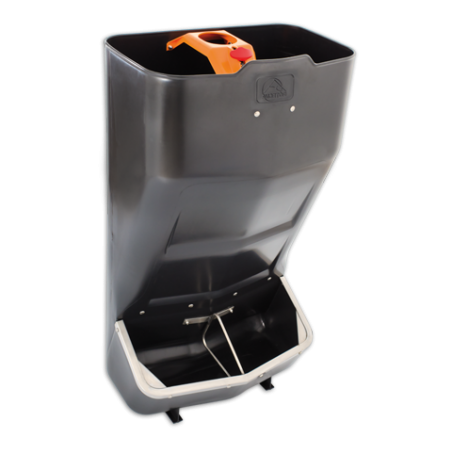Albeit having similar determinants, the conversion index of the best (25%) and of the least efficient producers (25%) can differ in 0.42 points (DPP, 2007).
The influence of the genetics and the nutrition (formulation and manufacturing of the compound feed) on the conversion index (CI) is clear. Nevertheless, other actions that are closer to the daily production routines can mean immediate improvements in the efficiency.

Where do we start?
In Table 5 we show the compound feed consumed, approximately, during a year in each of the production stages in a farm with 1,000 sows that includes the fattening stage.
Table 5. Calculation of the total consumption of compound feed in a farm
| Production stage | Total compound feed (tons/year) | % of the total compound feed | Price of the compound feed (€/ton) | Cost of the compound feed (€) | % of the cost |
| Breeding stage | 1,140 | 17 % | 300 € | 342,000 € | 16 % |
| Weaners stage | 650 | 9 % | 470 € | 305,500 € | 15 % |
| Fattening stage | 5,110 | 74 % | 280 € | 1,430,800 € | 69 % |
| Total | 6,900 | 100 % | 350 € | 2,078,300 € | 100 % |
Seeing these data it is logical to focus on improving the efficiency in the fattening stage, where the 74% of all the compound feed is consumed, but without forgetting the other production stages:
1. Divide the animals according to their sex and feed them according to the kind of animal. From the middle of the fattening stage onwards, the castrated males have lower energy and protein requirements than the females, and the requirements of the females are lower than those of the entire (non-castrated) males. If they are separated when being taken to the fattening stage and they are fed according to these specific requirements, the savings can be of up to 1 €/pig (Willis, 2004).
2. Feed the animals in stages. Using the maximum number of compound feeds during the growing and fattening cycle allows us to create "tailor made suits" from the nutritional point of view and to feed the animals in stages. In this way we get to limit the excesses (or the deficiencies) that we could face when less compound feeds are used. There is an improvement in the use of the compound feed and we reduce its average price, because we are using diets that are nearer to the real requirements. As an added benefit we reduce the excretion of nitrogen and phosphorous (Dourmad, 2007). Changing from 2 to 4 compound feeds in the fattening stage can mean an improvement of more than 2 €/pig (Willis, 2002).
3. Housing/environment. Independently from the animal welfare and health improvements, their performance is also positively affected by an adequate density. We must remember that the optimal density for a fattening pig is even lower than that specified by the legislation (Council Directive 2008/120/EC), especially in hot areas and periods.
In a trial in which the performance of female pigs of between 22 and 115 kg liveweight housed at a density of 0.65 or 0.74 m2/animal was compared an improvement of a 2.3% was seen in the CI, and this is equivalent to almost 1.5 €/pig (Brumm, 2004).
Another thing to bear in mind is the ambient temperature. The following table shows the increase in the animals' feed consumption for each degree (centigrade) below their lower critical temperature (LCT).
Table 1. Effect of the cold on the compound feed consumption
| Pig live weight (kg) | Extra consumption (g/d) for each ºC below the LCT | |
| Weaners stage | 9 | 2.0 |
| 20 | 4.0 | |
| Fattening stage | 45 | 6.6 |
| 100 | 10.8 |
Adapted from Baker, 2004
4. Check and adjust the feeding troughs. Badly adjusted feeding troughs can mean great losses. The feeding troughs must be checked daily so:
- we can see more than a 50% of the bottom of the feeding trough.
- we do not limit too much the access to the compound feed, because it would affect the consumption and it would be counterproductive.
- we can clean the corners of the feeding trough.
- we can control the moisture problems in the feeding troughs and the hoppers.
- we can change the broken or the obsolete feeding troughs for others that allow us to save compound feed.
- we can also control broken down feeding systems or the state of the silos.
Its calculation is difficult but it is estimated that if we see compound feed in the floor of the pen we are losing up to a 10% of compound feed.
5. Design feeding programs that include a consumption “budget” of each kind of compound feed per pig. We must regularly check the real consumption of compound feed and the growth of the animals in order to identify if we are using more or less compound feed of a certain kind. According to these evaluations we can check the design of the program or act at a farm level in order to correct bad practices.





